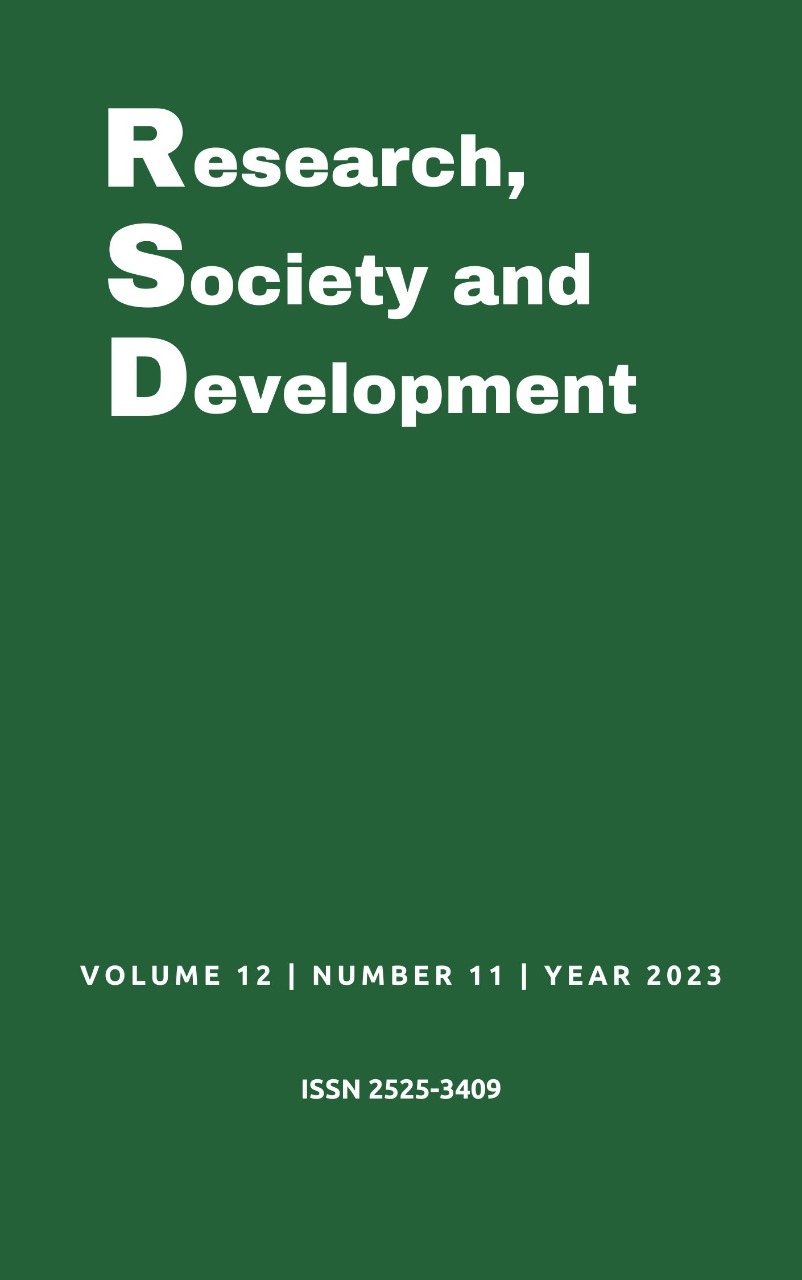Estudo da influência do ferro, fósforo, potássio, tântalo e flúor nas propriedades do TiNb2O7
DOI:
https://doi.org/10.33448/rsd-v12i11.43625Palavras-chave:
Baterias de íons lítio, Síntese hidrotérmica, Óxido de nióbio, Óxido misto de nióbio e titânio, Óxido misto de nióbio e tântalo.Resumo
Recentemente, os óxidos à base de nióbio têm atraído crescente interesse como uma escolha potencial para a tecnologia de baterias de íons de lítio. O óxido misto de nióbio e titânio, na composição do TiNb2O7, tem sido considerado um candidato promissor para os materiais anódicos de baterias de íons de lítio de nova geração. Entretanto, seus precursores requerem um severo e oneroso processo de purificação, uma vez que são processados a partir de minérios complexos. Além do custo de purificação, essas etapas resultam em quantidades significativas de efluentes ácidos e alcalinos, que geram custos adicionais para seu tratamento. A presente pesquisa foi idealizada para compreender a influência dos contaminantes comumente encontrados nos minérios ou inseridos nas rotas de processo para obtenção dos óxidos de nióbio. O ferro, potássio, fósforo, tântalo e flúor, foram inseridos no processo de síntese do TiNb2O7, a partir de soluções ultrapuras. Os óxidos mistos obtidos foram submetidos a caracterizações pela técnica de difração de raios X, microscopia eletrônica de varredura e, finalmente, aplicados em baterias de íon lítio para a avaliação da influência no desempenho eletroquímico. Os resultados mostraram que, apesar do impacto na formação do composto, a presença de ferro até 2.000 ppm na síntese não foi prejudicial ao processo em geral, enquanto a presença de fósforo e potássio resultou em sérios problemas nas etapas de preparação dos eletrodos. Já a presença de tântalo promoveu aumentos importantes no desempenho da bateria, atribuídos à formação de óxidos misto de alta pureza (TiNb2O7 e TiTa2O7).
Referências
Aghamohammadi, H. (2022). A comprehensive review study on pure titanium niobium oxide as the anode material for Li-ion batteries. Journal of Alloys and Compounds 911.
Anix, C. (2016) Silicon-based anodes for lithium-ion batteries: Effectiveness of materials synthesis and electrode preparation, Nano Energy, 27, 359-376.
Barcellona, S. (2015). "Analysis of Ageing Effect on Li-Polymer Batteries". The Scientific World Journal, 8.
Bragal, N. d. (2007). Obtenção de titânio metálico com porosidade controlada por metalurgia do pó. Química Nova 30.
Bommier, C, & Ji X. (2018) Electrolytes, SEI Formation, and Binders: A Review of Nonelectrode Factors for Sodium-Ion Battery Anodes. Small. 14(16)e1703576. 10.1002/smll.201703576.
Bruziquesi, C. G. (2019). Nióbio: um elemento químico estratégico para o Brasil. Quim. Nova,42(10), 1184-1188. org/10.21577/0100-4042.201
Gielena, D. (2019). The role of renewable energy in the global energy transformation. Energy Strategy Reviews, 38-50.
Goodenough, J. B. (2014). Austin, TX (US). Patente Nº US 8,647,773 B2.
Griffith, J. K. (2020). Titanium Niobium Oxide: From Discovery to Application in Fast-Charging Lithium-Ion Batteries – Chemistry of Materials, https://dx.doi.org/10.1021/acs.chemmater.0c02955 (2020). Chemistry of Materials. https://dx.doi.org/10.1021
Hu, J. (2022). Effects of long-term fast charging on a layered cathode for lithium-ion batteries. Journal of Energy Chemistry, volume 67, 604-612.
Läubaum L., et al. (2020) Impact of Particle Size Distribution on Performance of Lithium-Ion Batteries, GDCh Electrochemistry, 7(23), 4755-4766
Lin, C. (2016). "Electrochemical and Mechanical Failure of Graphite-Based Anode Materials in Li-Ion Batteries for Electric Vehicles". Journal of Chemistry. https: //doi.org/10.115
Liu, G. (2018). Mesoporous TiNb2O7 microspheres as high-performance anode materials for lithium-ion batteries with high-rate capability and long cycle-life. Electrochimica Acta 259, 20 - 27.
Lou, J., & Wang, J. (2008). Nanomechanics and nanostructured multifunctional materials: Experiments, theories, and simulations. Journal of Nanomaterials, 2008.
Pereira A. S. et al. (2018). Metodologia da pesquisa científica. UFSM.
Rodríguez, O. (2020). Recovery of niobium and tantalum by solvent extraction from Sn–Ta–Nb mining tailings. RSC Advances, 36.
Takami, N. (2018). High-energy, fast-charging, long-life lithium-ion batteries using TiNb2O7 anodes for automotive applications. Journal of Power Sources 396, 429–436.
Wahyuningsih, S. (2017). TiO2 Nanorods Preparation from Titanyl Sulphate. Mater. Sci. Eng.
Wang, J. (2020). Reductive Decomposition of Solvents and Additives toward Solid-Electrolyte Interphase Formation in Lithium-Ion Battery, J. Phys. Chem.
Weiss, M. (2021). Fast Charging of Lithium-Ion Batteries: A Review of Materials Aspects. Jornal Advanced Energy Materials, 11, 2101126.
Yang, C. (2016). Porous TiNb24O62 microspheres as high-performance anode materials for lithium-ion batteries of electric vehicles. Royal Society of Chemistry, Nanoscale.
Zhao, B R. R., Meilin Liu, Z. S. (2015) A comprehensive review of Li4Ti5O12-based lectrodes for lithium-ion batteries: The latest advancements and future perspectives, Materials Science and Engineering: R: Reports, 98, Pages 1-71, https://doi.org/10.1016/j.mser.2015.10.001.
Downloads
Publicado
Edição
Seção
Licença
Copyright (c) 2023 Marco Antonio Gonçalves; Alexandre de Faria Lima; David Maikel Fernandes; Rogerio Valentim Gelamo

Este trabalho está licenciado sob uma licença Creative Commons Attribution 4.0 International License.
Autores que publicam nesta revista concordam com os seguintes termos:
1) Autores mantém os direitos autorais e concedem à revista o direito de primeira publicação, com o trabalho simultaneamente licenciado sob a Licença Creative Commons Attribution que permite o compartilhamento do trabalho com reconhecimento da autoria e publicação inicial nesta revista.
2) Autores têm autorização para assumir contratos adicionais separadamente, para distribuição não-exclusiva da versão do trabalho publicada nesta revista (ex.: publicar em repositório institucional ou como capítulo de livro), com reconhecimento de autoria e publicação inicial nesta revista.
3) Autores têm permissão e são estimulados a publicar e distribuir seu trabalho online (ex.: em repositórios institucionais ou na sua página pessoal) a qualquer ponto antes ou durante o processo editorial, já que isso pode gerar alterações produtivas, bem como aumentar o impacto e a citação do trabalho publicado.


